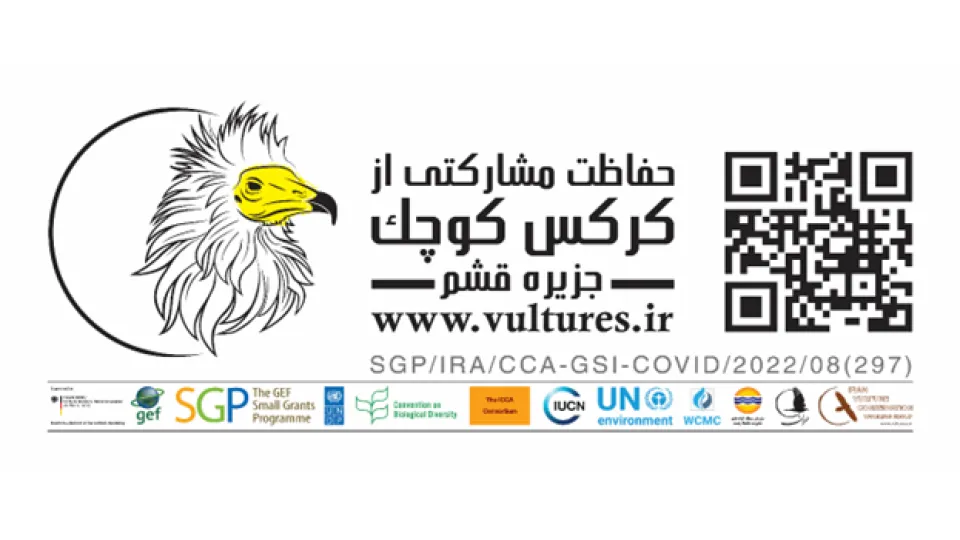
The "Gloabetoon Embroidery" design of the Egyptian vulture was performed by the female artists of the Burqa Group
Egyptian vulture is a species of vulture whose population is rapidly decreasing in the world. It has been listed as an endangered species since 2007. It is also on the list of protected birds in Iran and has conservation value.
The Egyptian Vulture Participatory Conservation Project is being implemented by the Tarlan Ornithological Society with the support of the United Nations Environment Small Grants Office in Iran and the Environmental Management of the Qeshm Free Zone Organization. The Small Grants Program (SGP) is implemented as part of the Global Environment Facility (GEF) of the United Nations Development Program (UNDP). Environmental conservation with people and job creation based on environmental capacity are the main pillars of this program.
Dr. Sona Ahadian, Director of the Handicrafts Working Group of the Participatory Conservation Project for the Egyptian Vulture on Qeshm Island and a social consultant for the Tarlan Institute, stated in this regard:
This project, using citizen knowledge, introduced this species as one of the attractions of Qeshm Island, and the Egyptian Vulture is now recognized as the symbol of the island's birds. Taking advantage of this new capacity with the potential of local residents, economic and social activists, and the government sector can create mutual benefits and boost parts of the livelihoods of local residents. In this way, conservation will also be carried out in a participatory and dynamic manner.
The activity of the handicrafts working group in this project is the production of handicrafts related to this species. In addition to boosting tourism and creating a livelihood for the locals, this plan can also create awareness and information about the status of the Egyptian vulture and introduce it to tourists. In this way, the culture of conservation can be made more in tune with the authentic local culture so that they move synergistically towards achieving sustainable development goals.
She continued, “In the Egyptian Vulture Participatory Conservation Project, after talking to a number of women artists from the Burqa group about the details of producing Golabetoon embroidery products, we provided the necessary explanations during a workshop on the status of this species on Qeshm Island, the importance of participatory conservation, and the role of handicrafts in this regard. Then, during supplementary talks, other information was provided about the bird’s physical characteristics, and after interactions and amendments by the project, it was finalized and Ms. Fatemeh Ahmadi and Alia Safari proceeded to implement the above two projects.
It should be noted that the Egyptian Vulture Golabetoon embroidery project is currently being implemented in other villages of the project.
